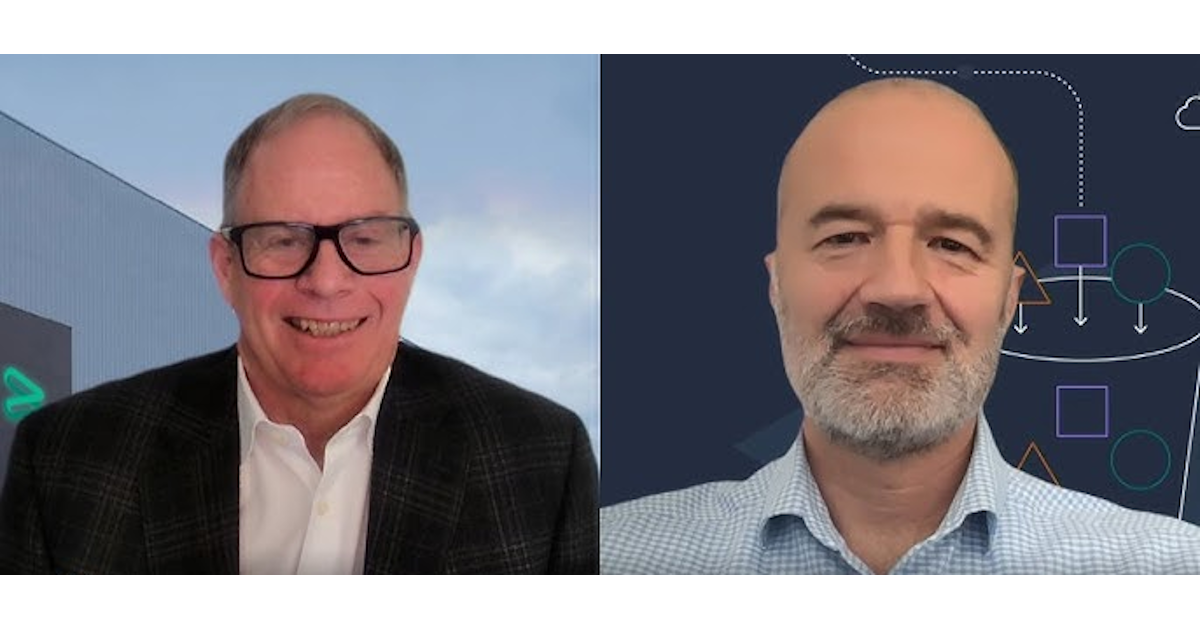 AI
AI
 AI
AI
 AI
AI
Generative AI and intelligent agents are increasingly penetrating heavy industry. Still, few sectors stand to benefit more than oil and gas, where complexity, declining reservoirs, workforce shortages and safety requirements collide.
Five years ago, energy technology company Baker Hughes Co. anticipated a critical industry shift: By 2030, 80% of production will come from existing declining reservoirs — not discoveries. That insight drove the creation of Leucipa, a cloud-native platform built to automate and optimize field production, according to James Brady (pictured, left), chief digital officer, OFSE, at Baker Hughes.
“The complexity of what we have to do in the industry with increased demand, more difficult hydrocarbons to access and deliver,” he said. “It has a lot to do with human capital extension, being able to give more powerful tools to the practitioners within this industry. Then, finally, it’s regulated a bit by control.”
Brady and Joseph Santamaria (right), global director of solution architecture and customer success — energy and utilities — at Amazon Web Services Inc., spoke with theCUBE’s Dave Vellante during an exclusive conversation with theCUBE, SiliconANGLE Media’s livestreaming studio. They discussed the future of industrial AI — where data, physics, automation and domain expertise converge to drive safer, more intelligent energy operations. (* Disclosure below.)
Beyond the buzzword, agentic AI follows a narrow, practical definition, according to Brady. It combines the knowledge of large language models with the ability to take automated action. In upstream energy operations, intelligent agents solve multiple challenges, including rising global demand, harder-to-reach reserves and stringent operational regulations.
“What I like to call agentic is the more formal viewpoint, which is if you have an LLM that you’ve built, you’ve probably enhanced an existing LLM that has a certain amount of information access,” Brady said. “An agentic AI, by definition, uses that repository and that ability to query that knowledge to take then some automated action.”
Gen AI fits into the oilfield perfectly for two reasons. First, oilfield operations generate a firehose of data — from drilling logs to pump telemetry to seismic models. Gen AI can synthesize these streams faster than any human team. Second, field conditions shift constantly, and intelligent agents can dynamically adjust recommendations and actions as conditions evolve, according to Santamaria.
“We have customers who are generating synthetic subsurface data to reduce drilling uncertainty,” he said. “Others are optimizing uplift and chemical selection using gen AI directly during production operations, or even forecasting water encroachment and sand production to minimize field disruptions. Beyond field operations, we’re working with many customers in trading, supply chain and retail, to name a few areas. Gen AI has applicability in virtually every facet of oil and gas operations.”
In response to the growing need for greater precision and efficiency in energy extraction, Baker Hughes created Leucipa. Three design principles underpin its operations: automation-ready architecture, radical data connectivity and embedded domain expertise.
“You deal with equipment from various vintages from many different vendors,” Brady said. “So, we decided that Leucipa had to be able to connect and integrate across all vendors in all data stores. It has close to 90 different connections to different data and applications. We can work with our own oil field equipment, our competitors’ equipment, etc. But, most importantly, you had to have the subject matter expertise, the domain basic capability already built in, before you start doing all the cute AI stuff.”
What truly differentiates Leucipa is its multilayered AI architecture. The base layer embeds the full depth of classical production engineering workflows — decline analysis, scenario modeling, reservoir behavior, power constraints, emissions considerations and more. On top of that foundation, Baker Hughes has introduced five categories of AI, including physics-guided equipment failure prediction, field-level scenario optimization, digital twins of both subsurface assets and surface equipment and conversational LLM interfaces that allow engineers to ask natural-language questions.
“We’ve been building it … deploying it all over the world right now, and it’s growing,” Brady said. “Did we anticipate the gen AI as it is now five years ago? To be honest, no. However, it fits so easily into the framework that we were building that it was a natural extension. And given the agile development, we were able to retool some of our priorities and plans and engage our customers to bring that in.”
In an industry defined by complexity, agentic AI isn’t a buzzword — it’s becoming the backbone of modern energy production. As Baker Hughes and AWS demonstrate, the future belongs to companies that combine clean data, deep domain expertise and intelligent automation to redefine industrial performance at a global scale.
Here’s theCUBE’s complete video interview with Brady and Santamaria:
(* Disclosure: AWS Inc. sponsored this segment of theCUBE. Neither AWS nor other sponsors have editorial control over content on theCUBE or SiliconANGLE.)
Support our mission to keep content open and free by engaging with theCUBE community. Join theCUBE’s Alumni Trust Network, where technology leaders connect, share intelligence and create opportunities.
Founded by tech visionaries John Furrier and Dave Vellante, SiliconANGLE Media has built a dynamic ecosystem of industry-leading digital media brands that reach 15+ million elite tech professionals. Our new proprietary theCUBE AI Video Cloud is breaking ground in audience interaction, leveraging theCUBEai.com neural network to help technology companies make data-driven decisions and stay at the forefront of industry conversations.